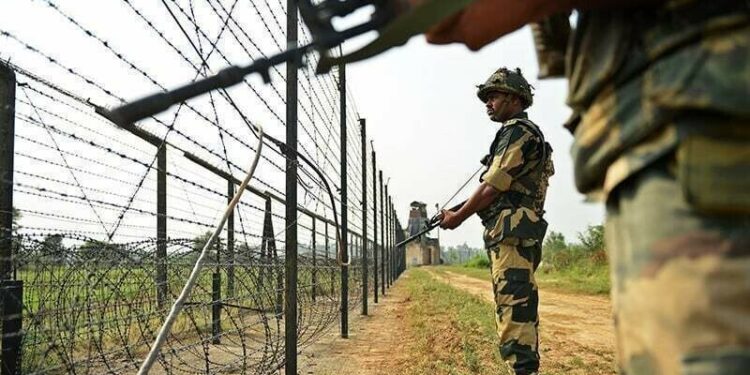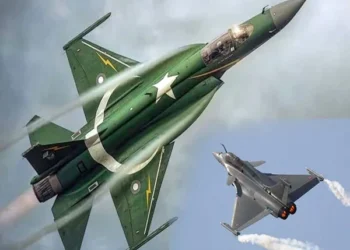Tensions between nuclear-armed neighbors India and Pakistan have once again flared up, as Indian forces initiated unprovoked firing along the Line of Control (LoC). In a swift and resolute response, the Pakistan Army retaliated with precision, successfully silencing enemy positions and reaffirming its commitment to defending national sovereignty.
Multiple Sectors Targeted in Overnight Aggression
According to credible security sources, Indian troops opened unprovoked fire late in the night, targeting several Pakistani posts situated across key sectors of the LoC. The affected areas include Nakial, Khoi Ratta, Sharda, Keel, Neelam, and Haji Pir. The Pakistan Army responded with a calculated and forceful counterattack, forcing the Indian guns to fall silent.
The aggression was not isolated. In fact, this is part of a series of violations that India has committed over the past few days. On the night of April 29 and 30, Indian troops had similarly violated the ceasefire by initiating fire in the Kayani and Mandal sectors using small arms.
Pakistan Army’s Swift and Befitting Response
Demonstrating high operational readiness, the Pakistan Army retaliated with precision and efficiency. Reports confirm that several Indian forward posts were damaged, with the Chakpatra post among those destroyed during the retaliatory strikes.
Security officials emphasized that the Pakistan Army remains vigilant and prepared to respond to any form of aggression. “The message is clear — any misadventure by the enemy will be met with a robust and befitting response,” said one high-ranking official.
Background: Mounting Tensions Post-Pahalgam Attack
This surge in LoC violations comes against the backdrop of heightened tensions following the tragic attack on tourists in Pahalgam, Indian-administered Kashmir. The April 22 incident resulted in the deaths of 26 Hindu pilgrims, which Indian authorities immediately linked to Pakistan-based groups. Although Pakistan vehemently denied involvement and offered to cooperate in an impartial investigation, India responded with a raft of hostile diplomatic and military maneuvers.
These included the suspension of the Indus Water Treaty — a vital bilateral agreement that governs water sharing between the two countries — and the expulsion of Pakistani diplomats from Indian soil. Visas for Pakistani citizens were canceled, and cross-border trade and people-to-people contact were disrupted.
Diplomatic Response from Pakistan
In reaction to India’s provocations, Pakistan’s National Security Committee (NSC) adopted a comprehensive diplomatic strategy. Key measures included restricting the number of Indian diplomatic staff in Islamabad to 30 and declaring that any interruption in the water flow from India would be treated as an act of war.
Prime Minister Shehbaz Sharif, in a gesture aimed at de-escalation, expressed readiness to accept an international inquiry into the Pahalgam attack. Nonetheless, India refused dialogue and continued its policy of confrontation, drawing criticism for its intransigence.
Global Concerns Over Rising Hostilities
The international community has expressed grave concerns over the deteriorating situation in South Asia. The United Nations Secretary-General Antonio Guterres and the U.S. State Department have both issued statements urging restraint from both sides. Analysts warn that any further escalation could have catastrophic consequences, given the nuclear capabilities of both nations.
Despite these appeals, India has so far shown little willingness to engage in constructive dialogue, opting instead for an aggressive posture that threatens regional stability.
Historical Context of Ceasefire Violations
Ceasefire violations along the LoC are not a new phenomenon. The region has witnessed numerous skirmishes, often triggered by underlying political tensions or retaliatory motives. However, the frequency and scale of such violations tend to rise during periods of heightened diplomatic friction — as seen in the current episode.
Both India and Pakistan agreed to a ceasefire agreement in February 2021, which brought a temporary pause to regular cross-border shelling. However, incidents like the latest firing in Nakial, Khoi Ratta, and other sectors indicate a dangerous return to instability.
Strategic Importance of the Line of Control
The LoC is a de facto border that divides the disputed region of Jammu and Kashmir between India and Pakistan. Stretching over 740 kilometers, it has historically been a flashpoint for military engagements. Areas like Sharda, Keel, and Haji Pir are strategically important due to their proximity to key military installations and supply routes.
Any violation in these regions is not merely tactical but carries significant geopolitical implications. Control and influence in these areas are seen as vital to broader national security interests.
Conclusion: The Need for Responsible Diplomacy
The recent incidents of unprovoked Indian firing on the LoC and the Pakistan Army’s decisive response underscore the fragile nature of peace in South Asia. With both nations maintaining significant military presence along the border and having access to nuclear weapons, the cost of miscalculation is enormous.
There is an urgent need for responsible diplomacy and constructive engagement. While Pakistan has shown a willingness to pursue peace through international mechanisms and dialogue, India’s continued hostility poses a serious threat to regional and global stability.
As the world watches closely, the hope remains that both nations will heed international calls for restraint and choose the path of peace over provocation.

























